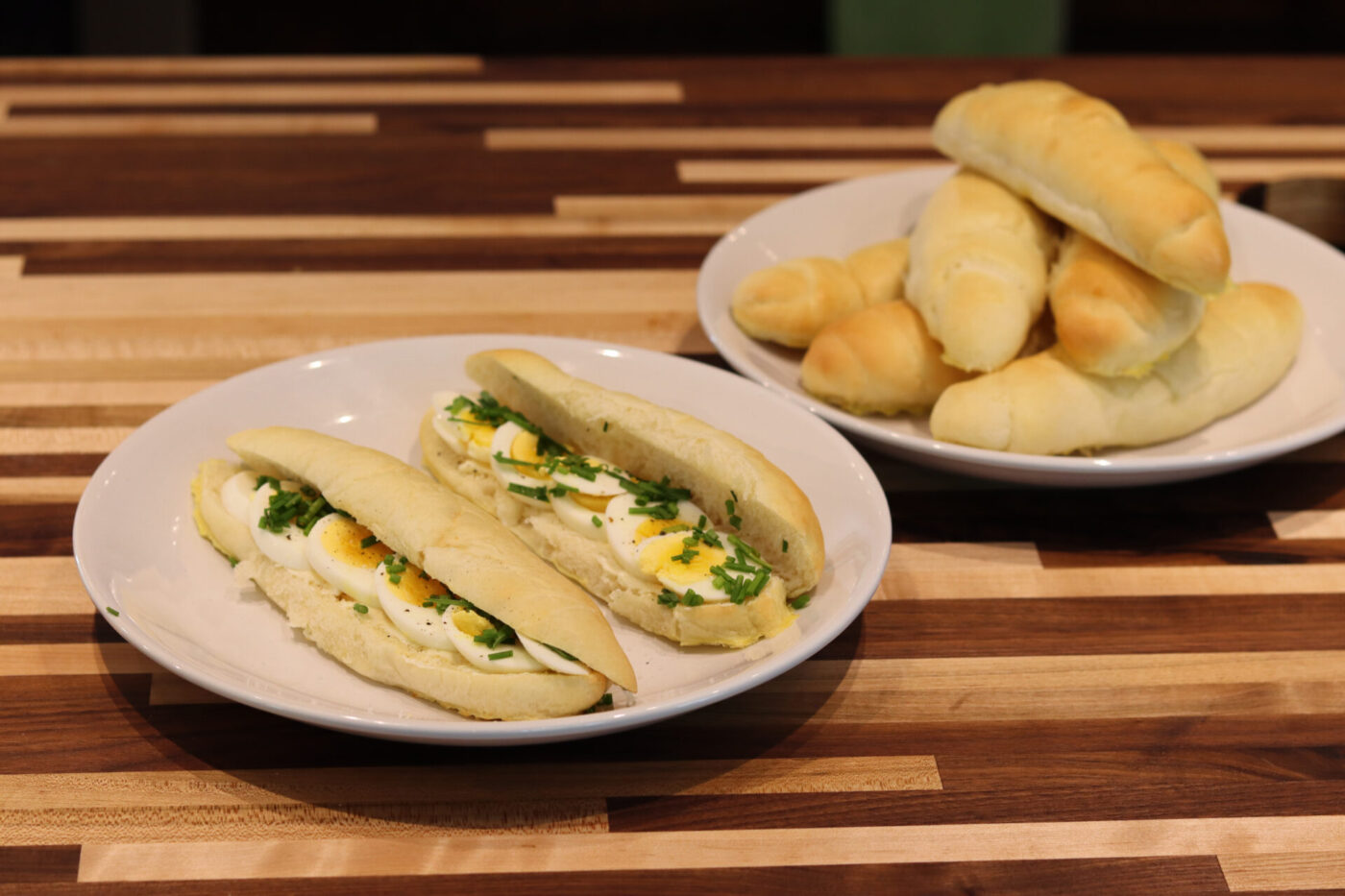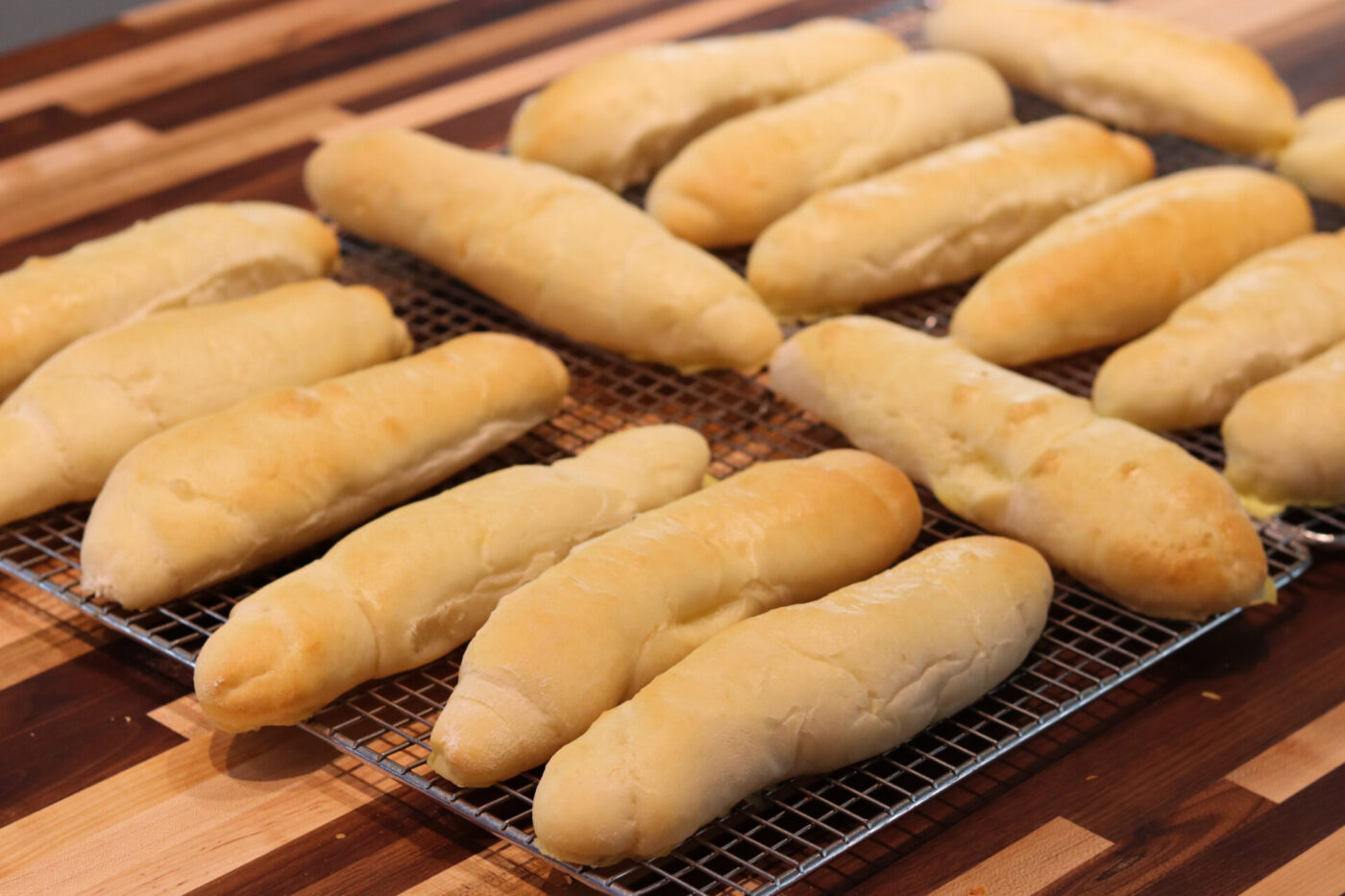Read More: History of Czech Roll Rohlik
Ancient Grains and Early Bread Making: The Precursors to the Rohlík
The history of bread making in the lands that now constitute the Czech Republic is as old as agriculture itself. Archaeological evidence suggests that the cultivation of grains and the production of various forms of bread, likely flatbreads at first, date back to the Neolithic period, many millennia ago. These early breads were undoubtedly far removed from the rohlíky we know today, likely unleavened and cooked on hot stones or in rudimentary ovens, representing the first tentative steps towards the sophisticated baking traditions that would later emerge.
As societies transitioned from nomadic hunter-gatherer lifestyles to settled agricultural communities, the cultivation of grains like wheat, rye, and barley became increasingly important. Bread, in its various forms, became a central component of the diet, providing essential sustenance and playing a role in social and religious rituals.
During the Middle Ages, bread making in Bohemia, like in much of Europe, was largely a domestic task. Families baked their own bread, often utilizing communal ovens shared by the village or neighborhood. These communal ovens were not only practical necessities but also social hubs, where people gathered, exchanged news, and shared in the communal activity of baking. Guilds of professional bakers, regulated by strict rules and traditions, began to emerge in towns and cities, establishing standards for quality and controlling the trade. While the breads produced during this period were undoubtedly diverse, they were likely denser and coarser than the modern rohlík, reflecting the types of flour available and the prevailing baking techniques.
The Rise of Wheat and the Refinement of Baking
The gradual shift towards wheat, particularly white wheat flour, as the preferred grain for bread making played a crucial role in the evolution of Bohemian baking. Wheat, with its higher gluten content compared to rye or barley, yielded lighter, more aerated breads with a more appealing texture.
As milling technology advanced, finer, whiter flours became increasingly accessible. This, in turn, allowed bakers to experiment with new recipes and techniques, leading to the development of more refined bread varieties. The specific shape of the rohlík – the elongated, slightly curved form – may have emerged gradually during this period, possibly influenced by other European bread-making traditions. The crescent shape, practical for even baking and visually appealing, likely contributed to its growing popularity.
The Rohlík’s Name: A Linguistic Link to its Form
The very name “rohlík” offers a tangible connection to its history and physical characteristics. Derived from the Czech word “roh,” which translates to “horn” in English, the name directly references the roll’s distinctive crescent shape, reminiscent of a small animal horn. This simple yet descriptive name has endured for centuries, becoming inextricably linked with this particular type of bread. It’s a linguistic clue that speaks volumes about the rohlík’s enduring form and its place in the Czech language.
A Bread for the People: The Rohlík’s Democratic Appeal
Unlike some elaborate pastries or specialty breads reserved for festive occasions or the wealthy elite, the rohlík quickly established itself as an everyday staple, accessible to all segments of Czech society. Its simple ingredients – primarily flour, water, yeast, salt, and sometimes a touch of sugar or fat – made it relatively inexpensive to produce and purchase.
The rohlík’s versatility further contributed to its widespread adoption. It was, and continues to be, a food for all hours and all occasions. For breakfast, it could be enjoyed simply with butter, a variety of jams made from locally grown fruits, or honey harvested from nearby forests. Savory spreads, such as homemade pomazánka (a generic term for various spreads, often based on cheese, meat, or vegetables), were also popular accompaniments. At lunchtime, the rohlík might be transformed into a hearty sandwich, filled with slices of ham, local cheeses, or perhaps smoked meats, reflecting the region’s rich tradition of charcuterie. Throughout the day, a plain rohlík served as a readily available and satisfying snack, often accompanying a cup of coffee, tea, or a glass of locally brewed beer.
Industrialization and the Modern Rohlík: Balancing Tradition and Efficiency
The 20th century brought significant changes to the production of rohlíky, mirroring broader trends in industrialization and food manufacturing. While small, artisanal bakeries continued to produce rohlíky using traditional methods, passed down through generations, the rise of industrial bakeries revolutionized the way rohlíky were made and distributed.
Large-scale, automated bakeries, equipped with modern machinery, began to mass-produce rohlíky, ensuring their widespread availability at affordable prices. These facilities could churn out thousands of rohlíky per hour, meeting the growing demand of an increasingly urbanized population. This shift towards industrial production made rohlíky even more accessible, further solidifying their place as a daily staple in Czech households.
However, some argue that this industrialization has come at a cost. While industrially produced rohlíky are convenient and consistent in quality, they may lack the subtle nuances of flavor and texture that characterize those made by hand, using traditional methods and locally sourced ingredients. The emphasis on speed and efficiency may have led to compromises in the fermentation process, resulting in a less complex flavor profile.
The Rohlík Today: An Enduring Symbol of Czech Culture
Despite the changes brought about by industrialization, the rohlík remains deeply embedded in Czech culture and national identity. It is a symbol of everyday life, a comforting reminder of home, and a tangible link to the country’s rich culinary heritage.
The simple act of purchasing fresh rohlíky in the morning is a daily ritual for many Czechs, a tradition passed down through generations. The aroma of freshly baked rohlíky wafting from bakeries is an integral part of the sensory landscape of Czech towns and cities.
The rohlík’s enduring popularity is a testament to its simple yet satisfying nature, its remarkable versatility, and its ability to evoke a sense of comfort and familiarity. It is a food that transcends social and economic boundaries, enjoyed by people from all walks of life.
Conclusion: A Story Baked into Every Bite, A Legacy that Continues
The history of the Czech rohlík is a captivating journey through centuries of culinary evolution, reflecting broader changes in agriculture, technology, social customs, and the very fabric of Czech society. From its likely origins as a simple wheat bread baked in Bohemian homes to its current status as a mass-produced, yet still beloved, national staple, the rohlík’s story is a testament to the enduring power of food to connect us to our past, shape our cultural identity, and nourish both body and soul.
As we bite into a soft, freshly baked rohlík, we are not just enjoying a piece of bread; we are partaking in a rich culinary legacy, a tradition that has nourished generations of Czechs. The rohlík’s simple form belies its complex history, a story that is baked into every bite, reminding us that even the most everyday foods can carry profound cultural significance. And as long as Czechs continue their daily ritual of buying fresh rohlíky, and continue to creatively adorn them as obložené chlebíčky, this humble roll will undoubtedly remain a cherished symbol of Czech cuisine and a delicious part of their national heritage, with its story continuing to be written with each new generation.



Share
Click on the icons below to share "Title of the item to share"